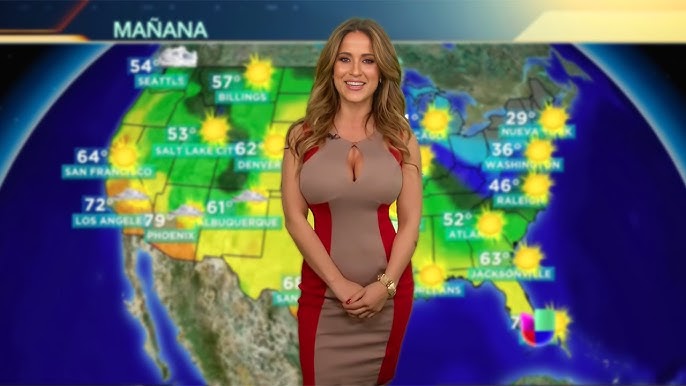Live television is one of the most challenging and high-stakes environments in media. Anchors and reporters must remain composed under intense pressure, with millions of eyes watching every word, every gesture, and every reaction. For one broadcast journalist, a seemingly small, split-second decision during a routine segment ended up spiraling into a career-altering event.
The Calm Before the Storm
The broadcast began like any other. The cameras rolled, the teleprompter lit up, and the newsroom buzzed with its usual energy. The journalist at the center of the story—an experienced and well-regarded professional—was in the middle of hosting a segment that seemed routine. It was the kind of coverage they had done countless times before, blending professionalism with the ease of someone who had mastered their craft.
The conversation was flowing smoothly, the transitions were seamless, and everything appeared to be on track. But then, as live TV often proves, the unexpected happened. A situation arose that required immediate action, and the journalist made a decision on the spot. It seemed, at the time, like the most reasonable course of action. Yet, within seconds, it became clear that this choice would ignite a controversy far beyond the newsroom.
The Incident That Sparked a Firestorm
The exact details of the moment were quickly captured and circulated online, as viewers began recording and sharing clips on social media. What might have been a fleeting or overlooked misstep in another era became front-page news in the digital age. Social media platforms exploded with reactions. Comments flooded in, hashtags were created, and the video went viral within hours.
Some viewers were shocked, others amused, and many outraged. It didn’t take long for armchair critics to weigh in, dissecting every second of the footage and speculating on the journalist’s motives. What started as a minor on-air moment quickly snowballed into a public relations crisis, amplified by the relentless pace of the internet’s attention economy.
The Backlash: Social Media and Public Opinion
In today’s interconnected world, public figures often find themselves at the mercy of online opinion. The internet can turn even the smallest incidents into massive debates, and this situation was no exception. Memes were created, think pieces were written, and news outlets jumped on the story, ensuring it stayed in the public eye for days.
For the journalist at the center of it all, the experience was nothing short of devastating. What had once been a promising career built on years of hard work and credibility now felt precariously close to collapse. The weight of public scrutiny was overwhelming, with every comment, tweet, and news report serving as a reminder of the magnitude of the fallout.

A Career-Altering Meeting
As the online firestorm raged on, the journalist was summoned to a meeting with the network’s higher-ups. The “corner office,” as it’s often called in newsroom lingo, is a place where careers are made—or, in some cases, ended. This meeting would prove to be the latter.
Despite heartfelt explanations, apologies, and a genuine willingness to make amends, the decision from the network’s leadership was swift and uncompromising: termination. The journalist was informed that their actions, while perhaps not malicious, had caused irreparable damage to the network’s reputation. In the competitive world of broadcasting, where trust and image are paramount, there was little room for error.
The moment was crushing. Years of dedication, long hours, and sacrifices came to an abrupt and unceremonious end. The journalist walked out of the meeting knowing their career in television, at least at that particular network, was effectively over.

The Fallout and Reflection
For the journalist, the days and weeks that followed were a whirlwind of emotions—shock, sadness, and a deep sense of loss. They found themselves replaying the moment over and over, questioning whether they could have done anything differently. Meanwhile, the public discourse continued, with commentators debating whether the punishment was too harsh or entirely justified.
Supporters argued that everyone makes mistakes and that a single moment shouldn’t define an entire career. Critics, however, maintained that those in positions of public trust have a responsibility to uphold the highest standards, especially when millions are watching.
The Unforgiving Nature of Live TV
This incident serves as a stark reminder of the unforgiving nature of live television. Unlike pre-recorded segments, where mistakes can be edited out, live broadcasts leave no room for error. Every action, every word, and every reaction is broadcast in real-time, leaving little chance to correct or clarify.
For journalists, the pressure to perform flawlessly is immense. They must not only navigate the complexities of delivering accurate and engaging content but also remain hyper-aware of how their actions might be perceived by a diverse and often critical audience.

Lessons Learned and Moving Forward
While the immediate aftermath of the incident was undoubtedly challenging, it also offered an opportunity for growth and reflection. The journalist began to explore new avenues, leveraging their experience and skills in other areas of media. They also became an advocate for greater understanding and empathy in the industry, sharing their story as a cautionary tale for others navigating the high-pressure world of live broadcasting.
For aspiring journalists, the story highlights the importance of preparation, adaptability, and resilience. Mistakes are an inevitable part of life, but how one responds to them can shape the path forward.
A Cautionary Tale for the Digital Age
This episode underscores a broader truth about the modern media landscape: the line between public and private has never been thinner, and the internet’s capacity to amplify mistakes is unparalleled. For those in the public eye, every action is subject to scrutiny, and the consequences of even minor missteps can be far-reaching.
At the same time, the story is a testament to the power of second chances. While the journalist’s career in live television may have taken a hit, their journey is far from over. In an industry that thrives on reinvention, there’s always room for a comeback.
